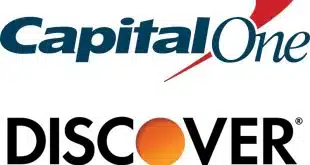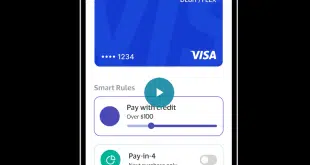Only a few years old, digital gift cards are soaring in popularity as U.S. consumers head into the heart of the holiday shopping season. Total loads on the products will reach $1.3 billion for November and December, a nearly four-fold increase from the same two-month stretch last year, according to a forecast from Maynard, Mass.-based Mercator Advisory Group, which follows the prepaid market.
As in prior years, the online-shopping frenzy unleashed on Cyber Monday, the Monday following Thanksgiving, has touched off what is likely to be the year’s biggest buying season for digital cards. In part, this is because of a late Thanksgiving this year. “It’s going to be Cyber Month because of the condensed holiday season” between Cyber Monday and Christmas, says Tom Niedbalski, senior vice president of business and client development for Transaction Wireless, a San Diego company that produces plastic and virtual gift cards for retail clients. “More and more people are going to be shopping online.”
Other companies looking to take advantage of digital cards' popularity include PayPal Inc., which on Monday announced its Digital Gifts Store, an e-commerce page that allows users to buy digital gift cards issued by merchants that accept PayPal. Users can buy the cards from the store by entering their PayPal credentials. The first merchant is Apple Inc.'s iTunes store.
Transaction Wireless doesn’t release figures, but Niedbalski says the company saw “triple-digit increases” in digital-card sales on Monday compared to Cyber Monday in 2012. This is largely owing to promotions merchants have started running, including offers of as much as $1 in cash for every $5 loaded on a gift card. Applebee’s, a restaurant chain and a Transaction Wireless client, offers a $10 digital bonus card for every $50 digital card purchased, for example. Another client, California Pizza Kitchen, offers a $20 digital bonus card when customers buy a $100 digital or plastic gift card.
Niedbalski estimates that digital cards now account for about 60% of gift cards sold by clients in the business-to-consumer market. “Everyone wants to get into digital because of the cost savings and the sex appeal,” he tells Digital Transactions News. “Once they go digital, plastic becomes a minority.”
Digital gift cards can be purchased online and sent via email to recipients, who can redeem them by scanning quick-response (QR) codes or by printing them out. They are convenient for consumers who don’t want to bother with postage and waiting times for fulfillment, and they are generally less costly to fulfill for businesses. They are especially useful for last-minute shoppers who run out of time before Christmas. “That week before Christmas, virtual gift cards become extremely popular,” Niedbalski says.
Now observers are reporting that digital cards, while still associated with the holiday season, are becoming less seasonal. A few years ago, “virtual cards were the new thing, the province of techies, then they started to get adopted by everybody,” says Ben Jackson, a senior analyst at Mercator. Jackson credits the success of the Starbucks gift card for making the product more of a year-round affair.
Experts are also noticing that many more consumers are buying the cards for themselves, or at any rate having them sent to themselves. Niedbalski says this could be the result of the cash offers and other promotions, which buyers want to pocket for themselves. “Customers are viewing [virtual gift cards] as a Groupon, buying them and sending them to themselves,” he says.
During times when merchants aren’t running promotions, about 20% of digital card orders are fulfilled to the buyer, according to Transaction Wireless’s records. But during promotional periods the cards are bought by and sent to the same person in as many as 70% of all orders, Niedbalski says. The buyer may be pocketing the card or re-gifting it, he says. Or “he could re-gift the card but keep the [promotional] bonus for himself,” he adds.
For the closed-loop gift card market overall, Mercator forecasts total loads will amount to $42.1 billion for November and December, up modestly from $40.5 billion last year. Some 1 billion plastic and digital cards will be sold in this two-month span, Mercator says.



